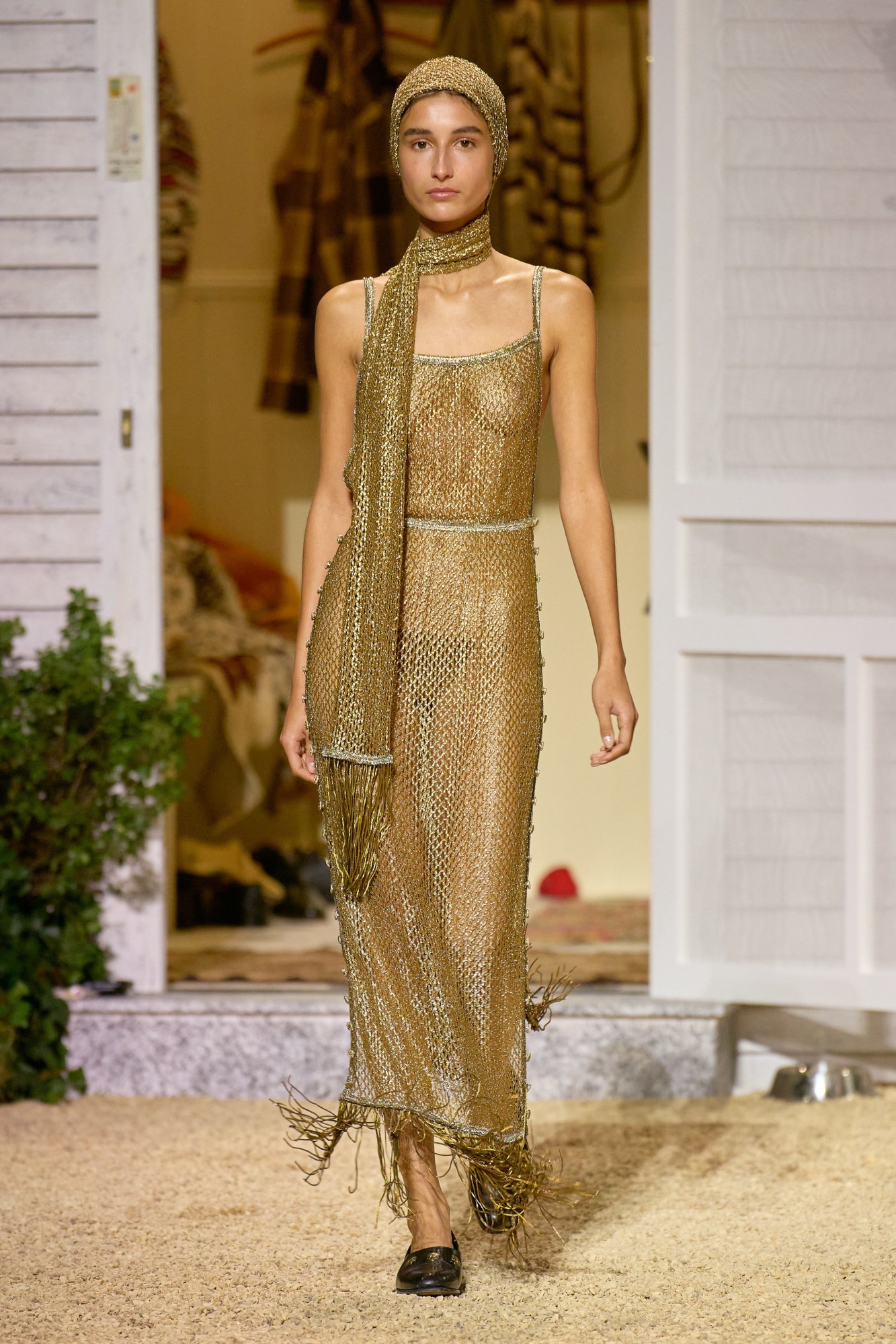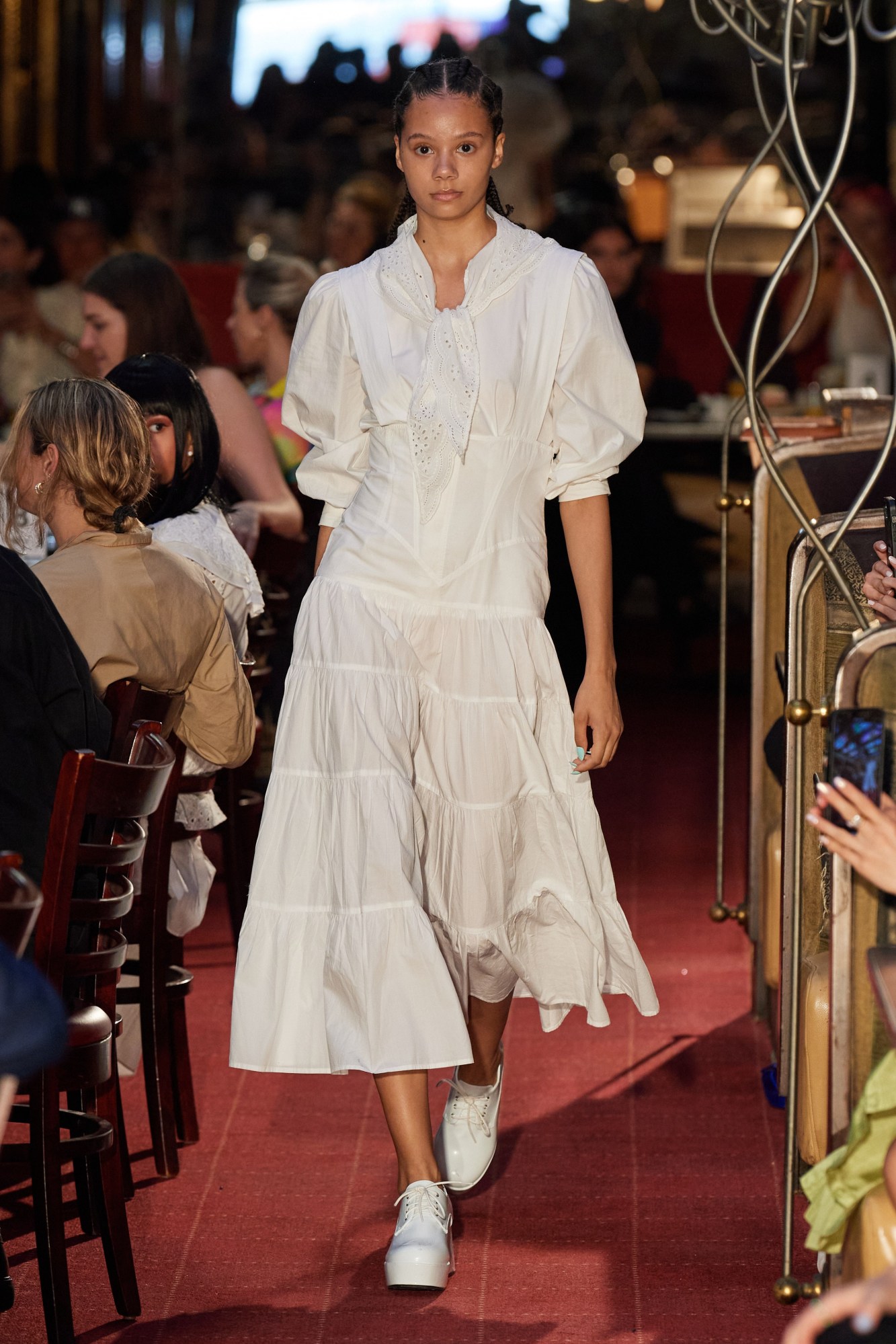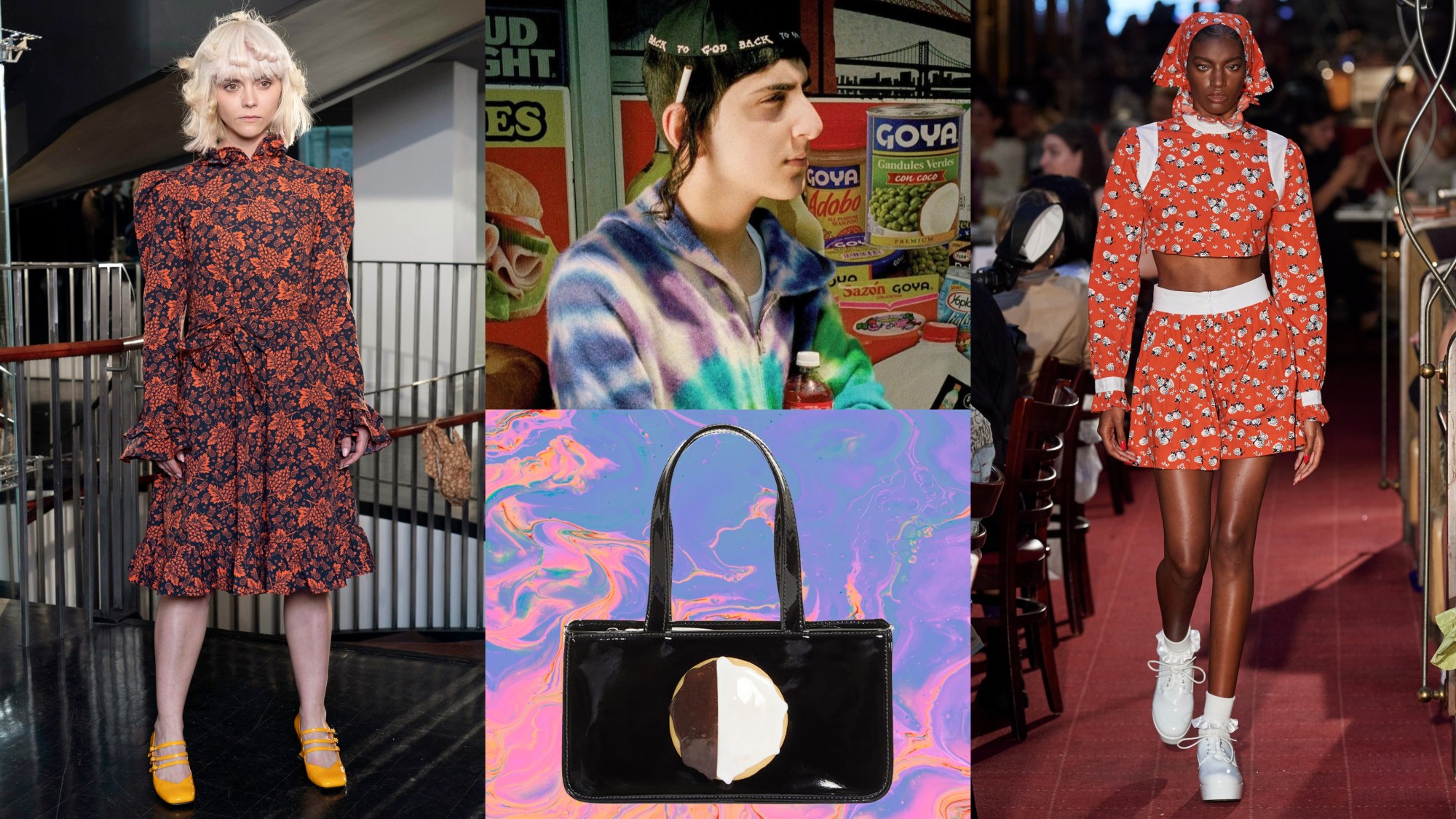Generations of Jewish tweens aspiring toward alt aesthetics have grown up sneaking onto their computers on Saturday mornings — shirking the Shabbat electronics ban — to log into their Tumblr accounts or Instagram feeds, where they’ve been confronted with a difficult reality: not only does the Christian hegemony define most of mainstream, global culture, it’s claimed the exit routes as well.
From the 2010s rosary-heavy The Virgin Suicides cosplay to the proliferation of Praying’s “Father, Son, Holy Ghost” bikinis, the past few years of irony-dappled, pseudo-traditionalist, Christian aesthetics have been a central tenet of alternative fashion. The “Heavenly Bodies”-themed Met Gala in 2018 solidified this association in the collective consciousness. More recently, the cultural seance that was the so-called ‘Indie Sleaze revival’ opened up a channel for the resurrection of Tumblr-era Catholic core amongst a new crop of edgy adolescents.
In the background, however, another force has been building to a fever pitch that now underlies every facet of the sartorial scene, despite remaining largely unacknowledged: Jewish aesthetics. Specifically, the visual facets of Ashkenazi Judaism have traced the paths of its people from Eastern Europe to the rest of the world by way of New York City. More nuanced and far deeper-reaching than cutesy bagel iconography, though, the Jewish influence in fashion is fascinating in its manifestations.
The momentum of Jewish style sprouts from a similar phenomenon as that of Catholic core — as Biz Sherbert noted in i-D in 2021, fashion has had a “come to Jesus” moment, so to speak, largely divesting from the appropriation of overtly racial aesthetics in response to wider conversations around racial inequality. In 2023, many white fashion lovers have the awareness to critically analyse the origins of the latest waves of “coolness”, recognising that a trend’s cultural capital was generated in a context that precludes them from joining in wholeheartedly. Some trends, of course, have no racially charged ties, but they also lack the special feature that drives the appropriative impulse in the first place — a visual connection to community, the transcendental, the sacred.

The thing that sets Jewish aesthetics apart from their Christian counterparts is a lack of iconography that is foundational to the latter religion. Most interpretations of the Torah forbid the creation of visual representations of divinity, so there isn’t a Jewish equivalent to the immediately-identifiable Virgin Mary, clad in blue and stained with waxen tears, or, more obviously, the crucifix. This means that Jewish style is defined mostly by its materials, silhouettes and an ethos of high-low cultural duality.
As any kid saddled with reading a disappointingly unsexy portion of the Torah for their B’nai Mitzvah can tell you, a huge percentage of the text is devoted to the granular detailing of materials, from those used to build the Ark of the Covenant to those accepted as sacrifices to God. While other middle schoolers get to opine on chapters that cover incestuous scandals, weird sex stuff, or, at least, some good old-fashioned patricide, these tweens must parse literal laundry lists — an infamously boring passage of Deuteronomy prohibits wearing blends of wool and linen (incidentally, it’s in the same chapter that declares “crossdressing” sinful. A flop).
The biblical do’s and dont’s of fashion have naturally trickled down through practising Jews’ garb into the present day, most visibly in religious contexts like a synagogue or in largely Orthodox communities. As a result, Jewish style still favours the ancestors’ preferred materials: silk, linen, leather, quilts and furs. Mediated through the Ashkenazic tenure in Eastern Europe, a contemporary body of textiles was born from these fabrics; colours like tekhelet (a holy shade of cobalt) and the white of garments for prayer and High Holidays; and patterns or icons that reference the Torah, but without accidental idolatry by sticking to florals and food. Pomegranates are a popular motif, shouted out in the Bible as appropriate embellishments for priestly robes. Puppets and Puppets’ AW21 collection, its first to go into commercial production, flagged the brand as a force in contemporary fashion and cemented its now-famous relationship with food. But before there was the iconic black and white cookie bag — itself paying tribute to the Upper West Side staple often found in Jewish bakeries — there was the pomegranate purse made of hand-stretched, painted leather.
Jewish fashion is most widely associated with silhouette, from the head-covering kippah (skullcap) to the ideas of tzniut, modesty mandates that vary by sect but usually entreat practitioners to cover their collarbones, elbows and knees. The NYC brand Batsheva singlehandedly initiated an influx of “prairie” and “house” dresses when it came on the scene in 2016, initiated by the designer’s impulse to create clothes that were high fashion because of — rather than in spite of — meeting Jewish standards of modesty, and inspired by the materials and cuts of outfits she’d seen in her Orthodox community as a kid. The brand was never a religious venture, and many of its newer pieces don’t fit the delineations of tzniut, but Batsheva’s validation of modest, desirable silhouettes as viable has since reverberated across the fashion industry, from its point of genesis in Brooklyn to Depop influencers in Nebraska.

Fringes, like the tzitzit tassels that peek out of the waistband or off the corners of a tallis (or prayer shawl), are also deeply steeped in signifiers, from a declaration of social status to a reminder of the importance of community in the many distinct threads, all gathered together. The first-ever womenswear collection by Bode, arguably one of the decade’s defining brands, contains several pieces that punctuate the prevalence of fringe in the fashion world over the past few seasons.
The throughline of Jewish wardrobes has been suffused over the years with a tendency to combine high and low culture materials and silhouettes, generated initially by historical fluctuations in Jews’ economic and social status as a bloc, then turned into a sort of tradition by kids of the Diaspora. Growing up with the media’s stereotyping of Jews as wealthy but frugal, we often see this stereotype — one that is vicious in the hands of bad actors — play out in our own communities and families in funny, stylistic juxtapositions (it seems like every Jew has a grandma who will refuse to replace bunion-bait sandals that were $10 in the 80s, which she then pairs with last year’s Louis Vuitton purse). These stereotypes thus become an aesthetic unto itself, like an inside joke steeped in bemused pride — it might as well be deemed “Yentacore” in honour of our matchmaking elders’ trailblazing drip.
High-low style has recently adapted the dorky-cool Jewish dad as its vector. The relentless popularity of a schlubby-but-elevated look for the summer has led to a mutation of Adam Sandler’s “style”: basketball shorts and gas station glasses paired with elegant details like a heel or pearl necklace. Stylist Mordechai Rubenstein uses the High Holidays as opportunities to pull fits and constantly uses Orthodox Jews as models and inspiration for everything, from his work on Uncut Gems to a collaboration with The Elder Statesman. The latter, specifically, featured an iconic photo of a young man in a kippah and peyot (long front locks of hair) with a cigarette tucked behind his ear.
Though the lack of readily-commercialised iconography is the reason Jewish style will never be the easy-to-identify darling of the alt-fashion world, it is also why it’s garnered such widespread and welcome influence. That’s because most of the things that make Jewish clothes special also translate into secular, non-costumey garments that capture the allure of clothing produced in a lineage of sacred tradition, without having to stoop to wearing Moses merch.



